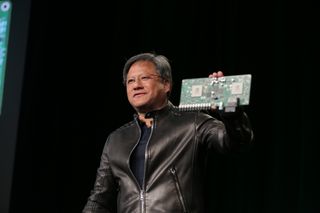
Nvidia CEO Jen-Hsun Huang has spoken out in response to the recent GTX 970 memory configuration controversy, an issue over which the company is now facing a class-action lawsuit.
For those unfamiliar, the controversy surrounds the GTX 970, which breaks its 4GB VRAM into a 3.5GB chunk of GDDR5 and a separate 500MB that runs significantly slower.
In a statement, Huang describes the segmentation as intentional, allowing the card to be a step up from a 3GB card.
"GTX 970 is a 4GB card," Huang said. "However, the upper 512MB of the additional 1GB is segmented and has reduced bandwidth. This is a good design because we were able to add an additional 1GB for GTX 970 and our software engineers can keep less frequently used data in the 512MB segment."
However, this was failed to be properly communicated to the company's internal marketing teams (as well as externally to reviewers at launch), leading to confusion and, on many users parts, anger. Rather than viewing the 970's segmented design as a step up from 3GB, it was seen as a failure to deliver on the promise of 4GB.
"We won’t let this happen again," Huang said. "We’ll do a better job next time."
You can read Huang's full (though still brief) statement on the issue here.
The biggest gaming news, reviews and hardware deals
Keep up to date with the most important stories and the best deals, as picked by the PC Gamer team.
As the former head of PC Gamer's hardware coverage, Bo was in charge of helping readers better understand and use PC hardware. He also headed up the buying guides, picking the best peripherals and components to spend your hard-earned money on. He can usually be found playing Overwatch, Apex Legends, or more likely, with his cats. He is now IGN's resident tech editor and PC hardware expert.

Nvidia's upgrading GeForce Now's $10 tier with 1440p and Ultrawide resolutions, but the only extra Ultimate users get is a new 100-hour play limit

Intel CEO sees 'less need for discrete graphics' and now we're really worried about its upcoming Battlemage gaming GPU and the rest of Intel's graphics roadmap
Most Popular







